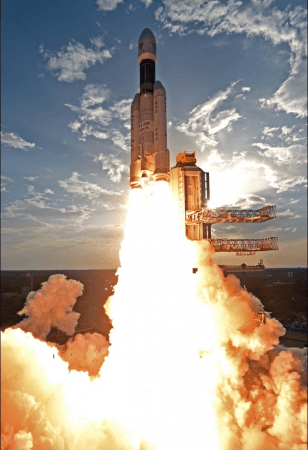
India's Moon mission Chandrayaan-2 was scheduled to launch in October after delays pushed it back from its original April launch plans. Reports have now emerged saying that the mission has been pushed back even further. ISRO is now looking at a 2019 launch.
Chandrayaan-2 will be landing a rover on the surface of the Moon has been postponed because of "technical glitches" and the next possible window for launch is next year.
With this delay, it is likely that Israel would land their rover on the Moon before India, notes a report by NDTV.
Israel, in collaboration with Google's Lunar X prize competitor SpaceIL has set its sights on a December launch. If they manage to make it to the Moon before ISRO, it will be the fourth country to land a robot on the Moon after the USA, Russia, and China.
Israel will be taking the help of SpaceX and leave Earth to the Moon to land their "Sparrow" probe onboard a Falcon 9 rocket
ISRO, on the other hand, will be using its own launch vehicle - the GSLV MK-III for this mission. The MK-III is India's largest rocket that weighs in at around 640 tonnes and launch will happen at Sriharikota.

M Annadurai, the director of UR Rao Satellite Centre, told NDTV that the orbiter is fully ready and tested, adding that the lander is currently undergoing tests. "It needs four plus one, five thrusters of 800 Newtons which will be used to make it gradually come down and land on the moon surface."
"These tests are going on in a simulated moon environment," he explained.
"All things put together we will be able to manage end of this year to roll out all the three combinations from the ISRO Satellite Center in Bengaluru to Sriharikota."
Apart from the ISRO delay, there are several postponed launches from space agencies around the world, including NASA. Moon missions by the American space agency have been plagued with delays.
The SLS programme and the Orion spacecraft is well behind schedule. It was this rocket that NASA had pinned hopes on replacing the Saturn V that took the Apollo mission to the Moon. SLS's smaller, less powerful version might be ready by 2020. The original plan was to make a December 2019 launch.














